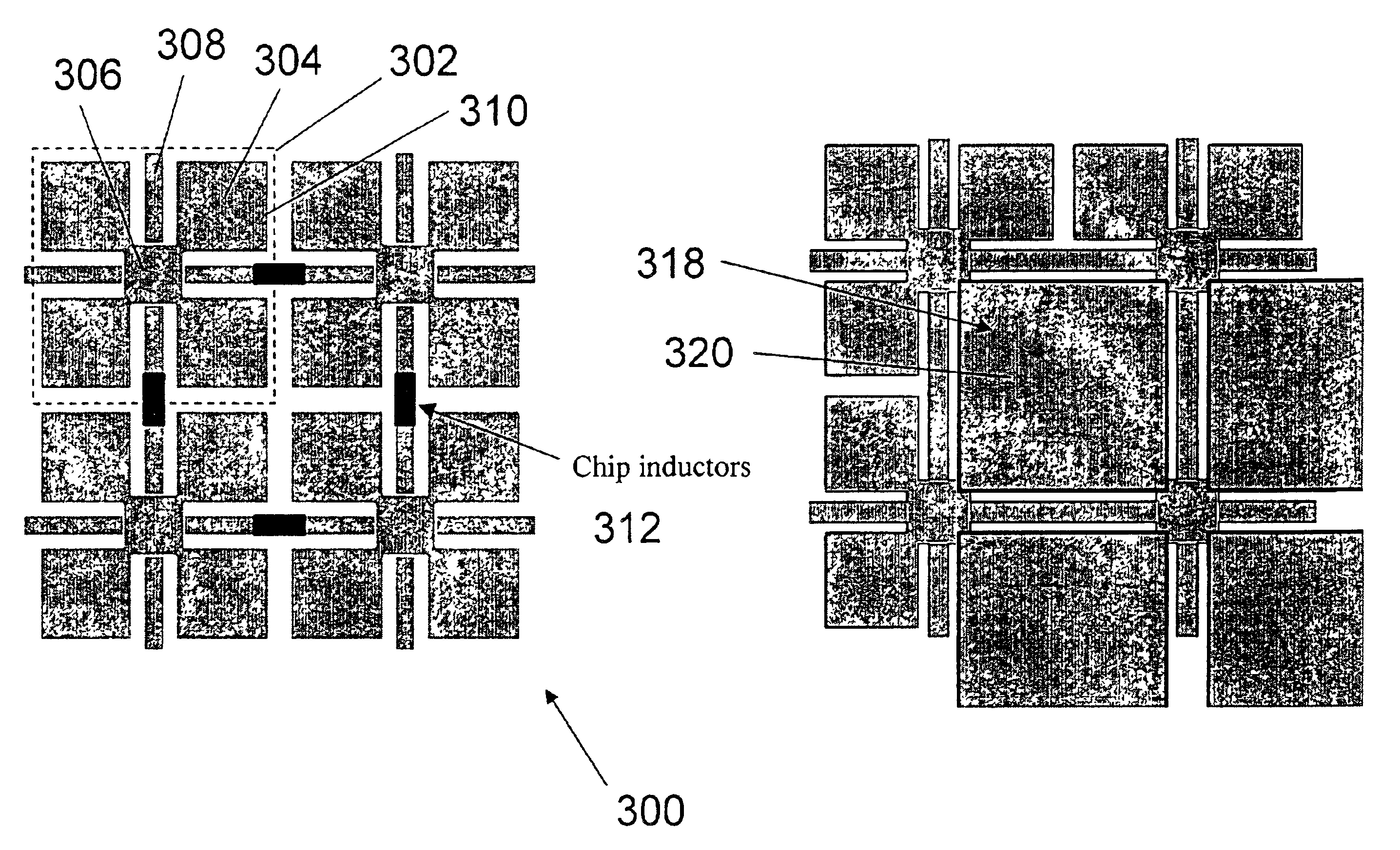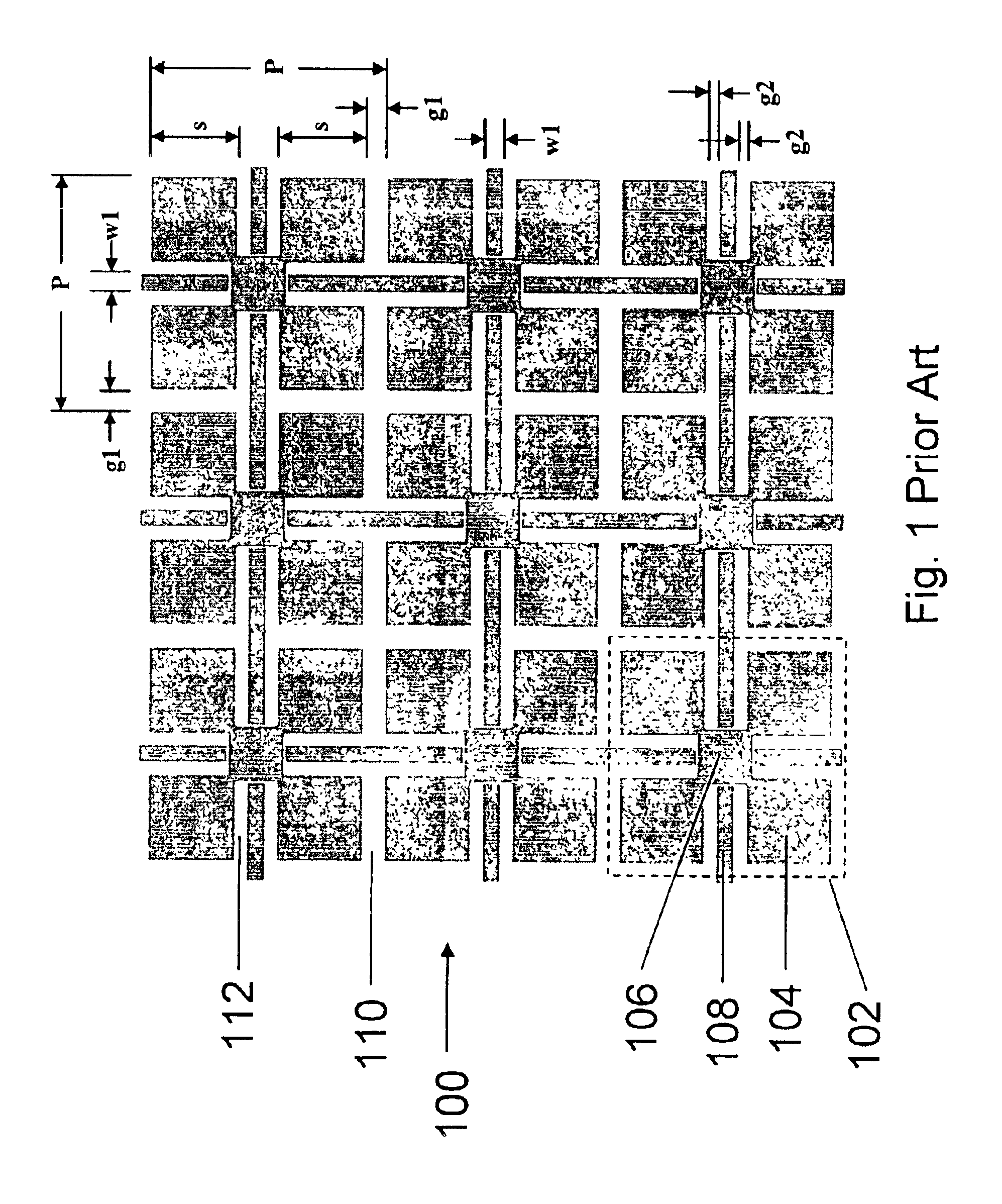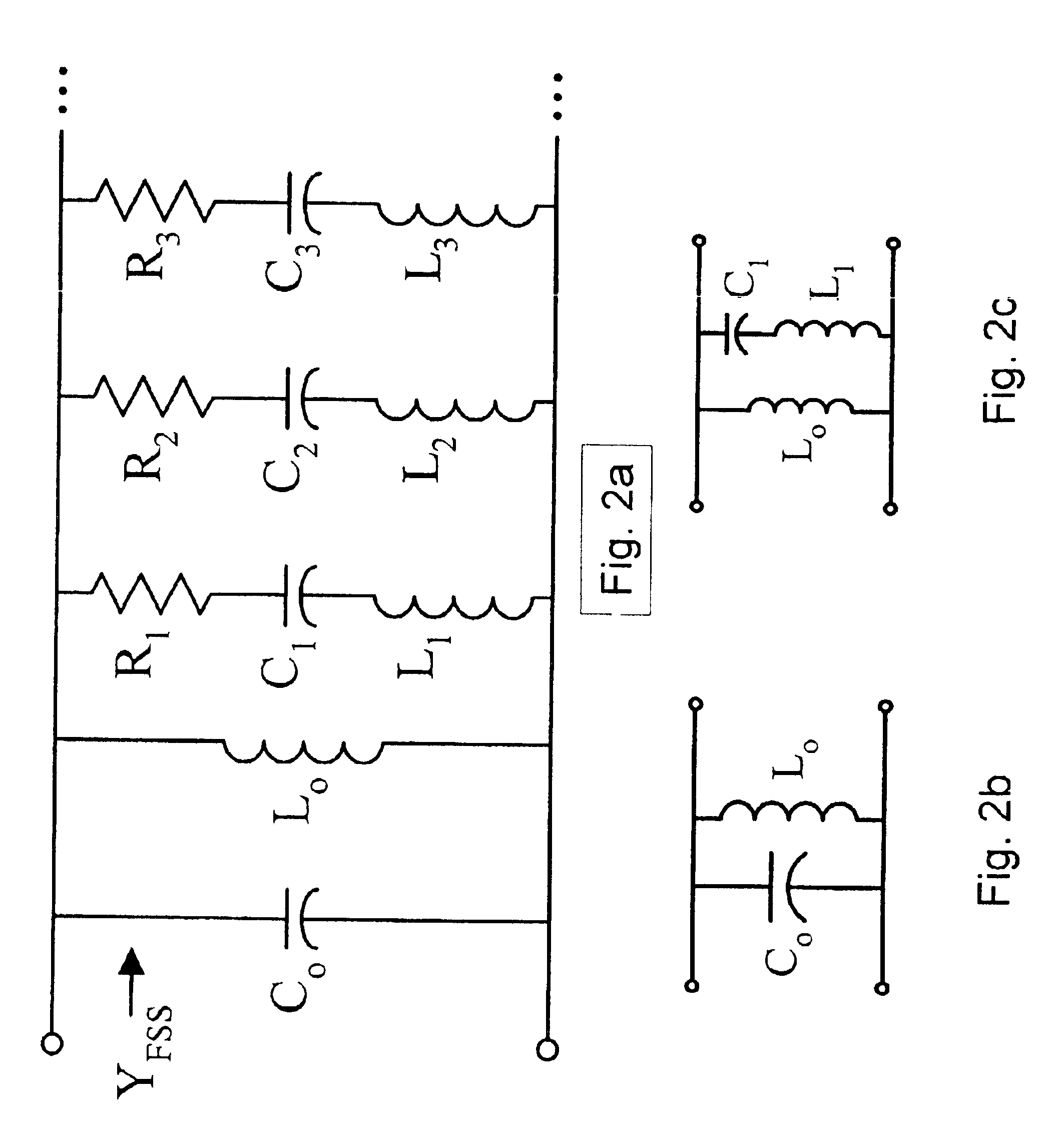Low frequency enhanced frequency selective surface technology and applications
a selective surface and low frequency technology, applied in simultaneous aerial operations, antenna details, antennas, etc., can solve the problems of rf power leakage through slotted ground planes, large size, poor gain-bandwidth product of whip antennas, etc., to reduce the physical size of printed patch antennas, high impedance surfaces, cost-sensitive
- Summary
- Abstract
- Description
- Claims
- Application Information
AI Technical Summary
Benefits of technology
Problems solved by technology
Method used
Image
Examples
Embodiment Construction
[0075]The frequency selective surfaces (FSS) in the embodiments below are electrically-thin, periodic, printed circuit boards. A FSS may be formed from a multi-layer printed circuit board, not just a single thin layer of metal, or just a single layer of metal etched on a dielectric layer. In currently pending patent application Ser. No. 09 / 678,128 filed Oct. 4, 2000 and entitled “Multi-resonant High-Impedance Electromagnetic Surfaces,” herein incorporated by reference, Diaz and McKinzie teach that electrically thin FSS structures can be accurately modeled, in general, with effective sheet admittance Y(ω) using the second Foster canonical form as an equivalent circuit: Y(ω)=jω C0+1jω L0+∑ n=1 N 1Rn+jω Ln+1jω Cn
[0076]This admittance function, Y(ω), is related to the FSS sheet capacitance (C=∈1t∈0t) by the relation Y=jωC. The corresponding equivalent circuit is shown in FIG. 2a. Each series RLC branch manifests an intrinsic higher order resonance of the FSS. For an FSS made...
PUM
 Login to View More
Login to View More Abstract
Description
Claims
Application Information
 Login to View More
Login to View More - R&D
- Intellectual Property
- Life Sciences
- Materials
- Tech Scout
- Unparalleled Data Quality
- Higher Quality Content
- 60% Fewer Hallucinations
Browse by: Latest US Patents, China's latest patents, Technical Efficacy Thesaurus, Application Domain, Technology Topic, Popular Technical Reports.
© 2025 PatSnap. All rights reserved.Legal|Privacy policy|Modern Slavery Act Transparency Statement|Sitemap|About US| Contact US: help@patsnap.com



